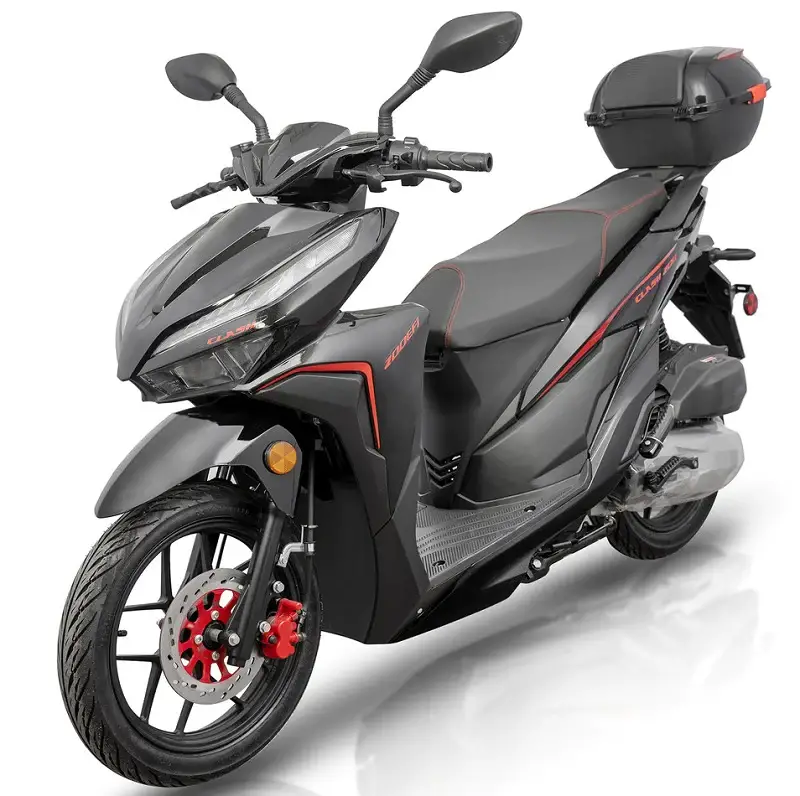A moped scooter is a lightweight, motorized vehicle that combines the features of a bicycle and a motorcycle. It typically has a step-through frame, making it easy to mount and dismount. The engine is usually smaller than that of a motorcycle, and the top speed is usually lower, typically around 30-40 miles per hour. Moped scooters are designed for short trips and commuting in urban areas, where traffic congestion and parking limitations are common.

Do you need a license to drive a moped?
In order to drive a moped, one must possess a valid driver’s license. However, the specific requirements for obtaining a license to operate a moped may vary depending on the jurisdiction in which you reside. In this essay, we will discuss the general requirements for obtaining a moped license and provide authoritative references that can help answer this question in detail.
In the United States, for example, the licensing requirements for mopeds are determined by each state’s Department of Motor Vehicles (DMV). Mopeds are typically classified as motorized bicycles, which are subject to different regulations than motorcycles. Generally, to operate a moped, one must:
- Obtain a learner’s permit or driver’s license, depending on the state. Most states do not require a separate moped-specific license, but rather, a standard Class C or M driver’s license will suffice.
- Complete a motorcycle safety course. Some states mandate that moped operators must complete a motorcycle safety course before they can legally operate the vehicle.
- Register and insure the moped. Mopeds are considered motor vehicles in most states, so they must be registered and insured to be operated on public roads.
- Adhere to local age restrictions. In some states, there may be a minimum age requirement for operating a moped, usually between 14 and 16 years old.
What are the benefits of using a moped scooter?
Moped scooters offer several benefits, including:
- Environmentally friendly: Moped scooters emit fewer pollutants than cars and motorcycles, making them an eco-friendly transportation option.
- Cost-effective: Moped scooters are generally less expensive to purchase, maintain, and operate than cars and motorcycles.
- Energy-efficient: With smaller engines and lighter weight, moped scooters consume less fuel, making them energy-efficient.
- Easy to ride: Moped scooters have a simple, user-friendly design, making them easy to learn and operate for both new and experienced riders.
- Space-saving: Moped scooters are compact and can be easily parked in tight spaces, making them ideal for urban environments.
- Fun and stylish: Moped scooters come in various designs, colors, and styles, making them a fashionable and enjoyable mode of transportation.
What are the different types of moped scooters available?
There are several types of moped scooters available, each with its unique features and design:
- Gas-powered scooters: These scooters run on gasoline, providing a more powerful and faster ride than electric scooters.
- Electric scooters: These scooters use electric motors, offering a quiet, emission-free ride with lower operating costs.
- Foldable scooters: These scooters can be easily folded for compact storage and transportation.
- Scooterettes: These scooters are smaller and lighter than traditional mopeds, making them even more suitable for urban environments.
- Moped bicycles: These scooters combine the features of a bicycle and a moped, offering a pedal-assist option for longer distances.
- Custom scooters: These scooters are designed and built by enthusiasts, offering unique and personalized features.

What are the key factors to consider when choosing a moped scooter?
When choosing a moped scooter, it’s essential to consider the following factors:
- Budget: Determine how much you can afford to spend on the scooter, including the initial purchase price and ongoing maintenance costs.
- Purpose: Consider how you will use the scooter – for commuting, leisure, or both – and choose a scooter that meets your needs.
- Size and weight: Ensure the scooter is suitable for your height and weight, as well as your storage and parking situation.
- Engine type: Decide whether you prefer a gas-powered or electric scooter, considering factors such as power, speed, and environmental impact.
- Design and style: Choose a scooter that matches your personal preferences and style, as well as any local regulations regarding scooter design.
- Reliability and brand reputation: Research the brand and model you’re considering, paying attention to customer reviews and the scooter’s overall reliability.
- Warranty and customer support: Make sure the scooter comes with a solid warranty and that the manufacturer and dealer provide good customer support.





